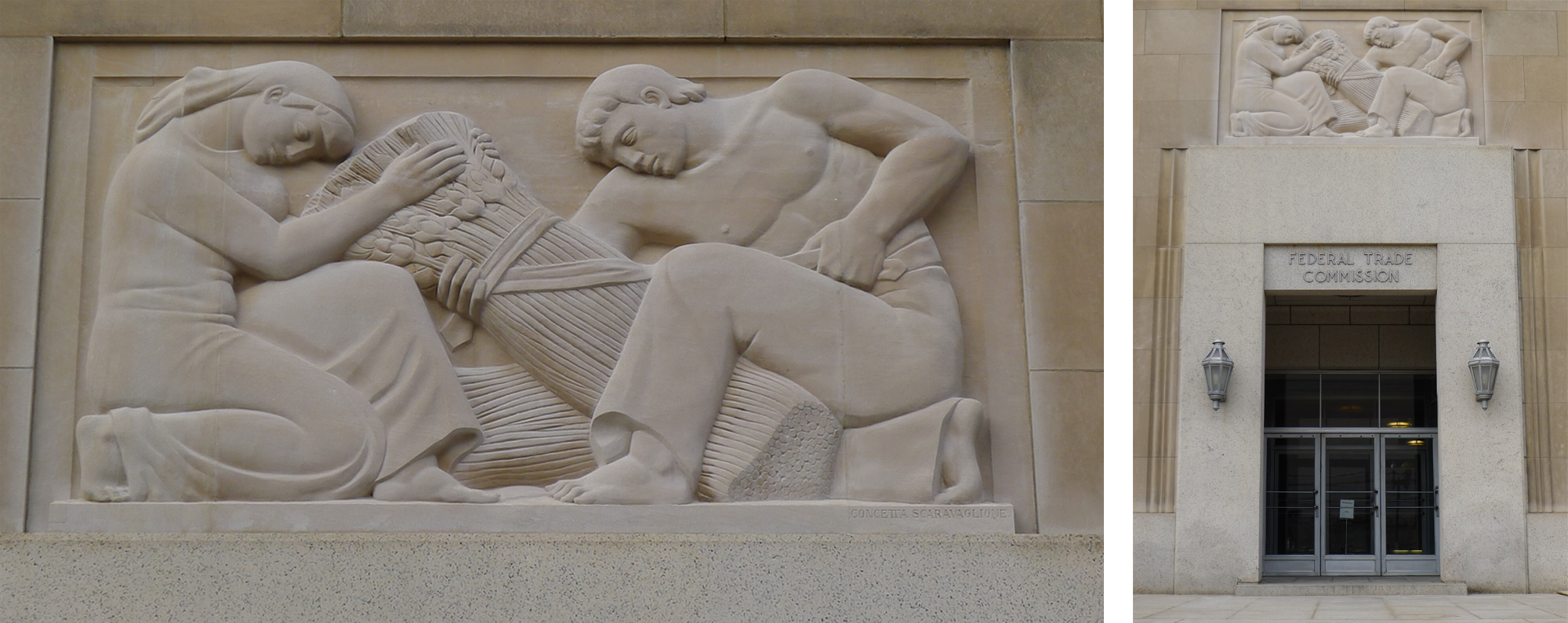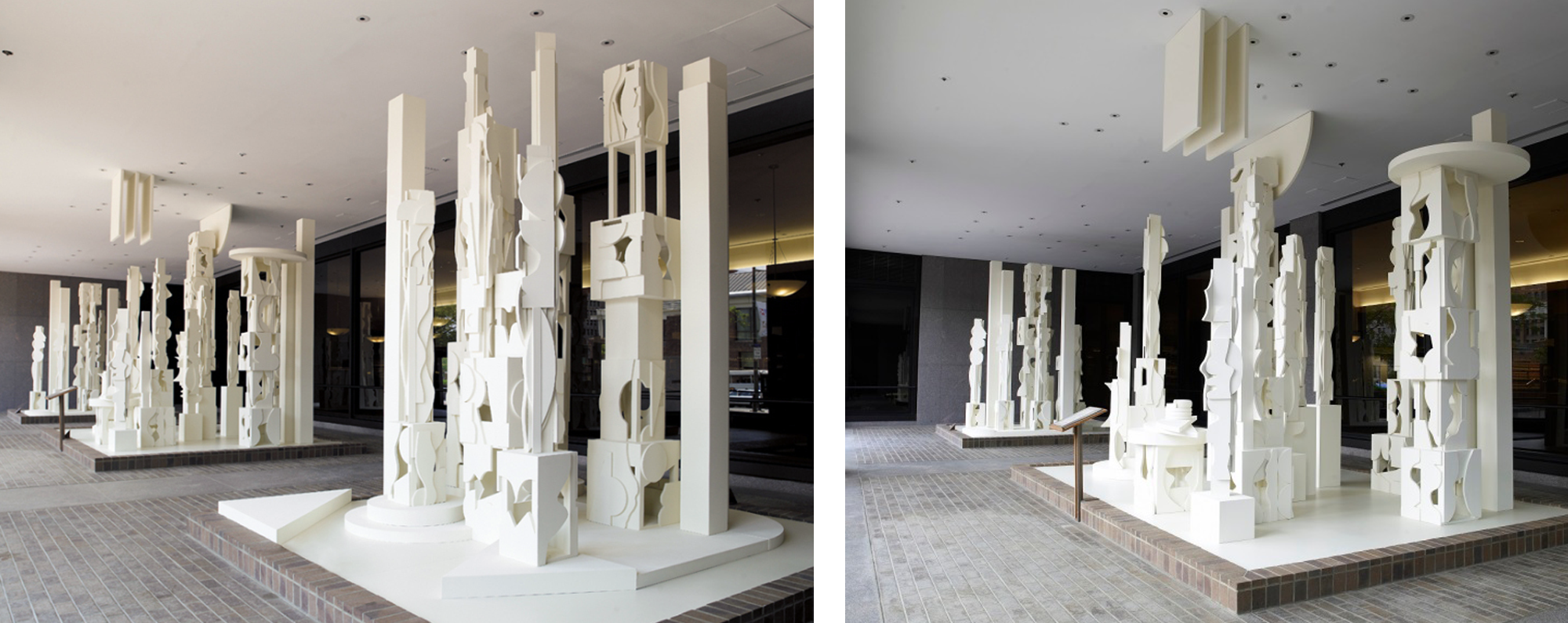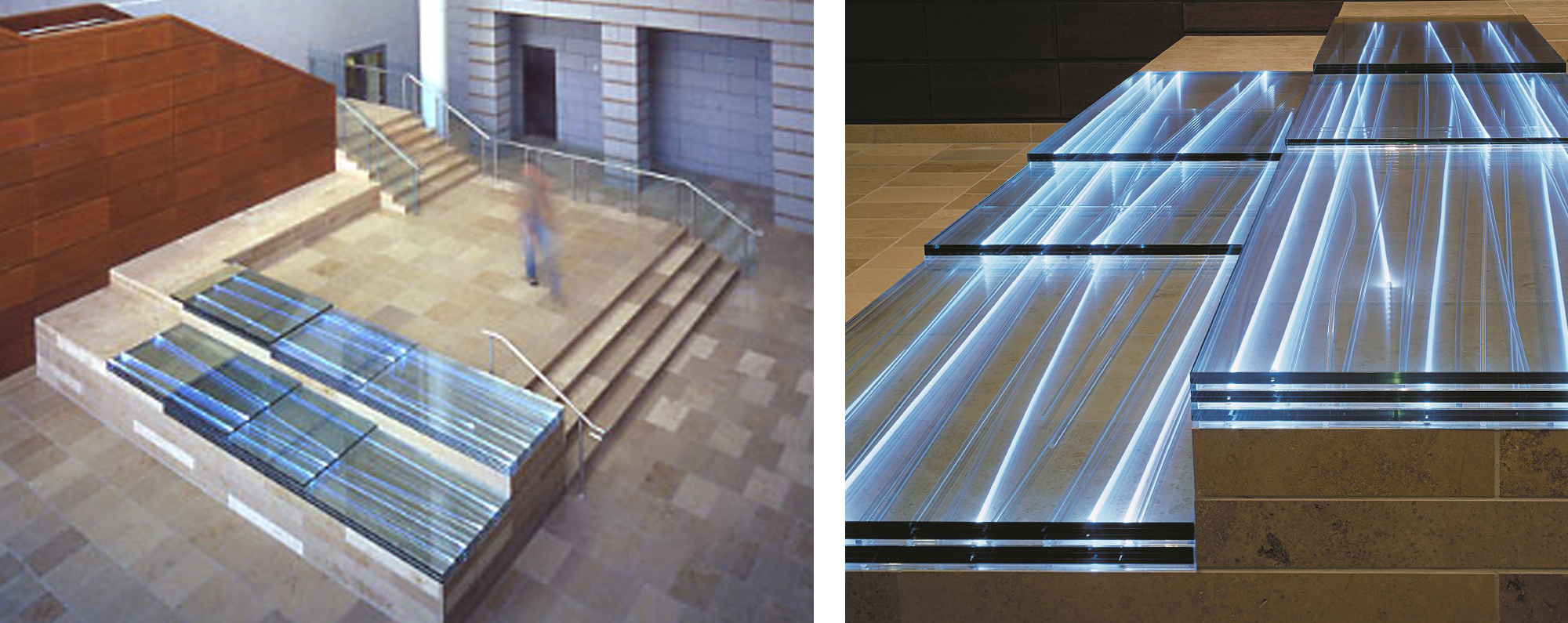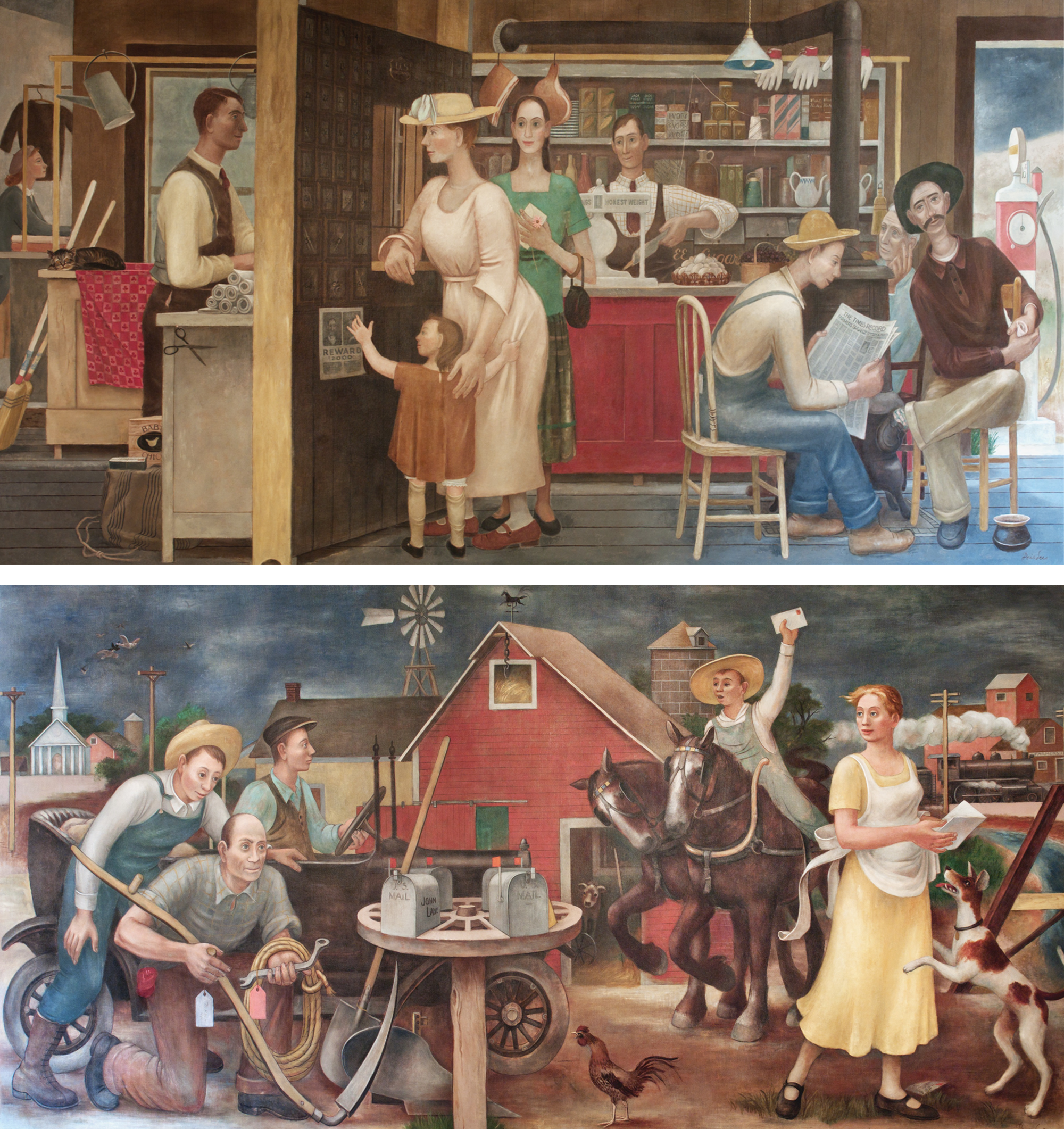
Five Women Artists Who Shaped Public Art
Post filed in: Art
In recognition of the many talented women who have shaped public art and broken barriers in the art field, the General Services Administration (GSA) is excited to highlight five artists in the GSA Fine Arts Collection during Women’s History Month! In January 2022, GSA announced it was updating provisions of its Art in Architecture program, which commissions art in federal buildings, to expand access to a broad array of artists and better reflect the diversity of America in public art. GSA removed restrictions on subject matter, theme, and art styles that had excluded many artists from consideration for commissions. Through this effort, GSA hopes to see the work of more women artists from diverse communities incorporated into our civic spaces.
Concetta Scaravaglione

In 1938, Concetta Scaravaglione carved a limestone relief for an entrance to the Federal Trade Commission in Washington, DC. A talented sculptor, she began her artistic training at the age of sixteen while working at a perfume factory to support herself. In her relief, two individuals work together to bind wheat. Titled “Agriculture,” the relief celebrates one of the dominant trades in the United States during the 1930s. Scaravaglione went on to become the first woman to win the famed Rome Prize to study sculpture at the American Academy in Rome.
Anita Glesta

Anita Glesta was born in Chicago, Illinois, in 1958. Her “Census Walk of Numbers,” was made in 2007 for the U.S. Census Bureau Headquarters in Suitland, Maryland. It is a sweeping environmental artwork that incorporates an array of numerical systems suggesting the diversity of the U.S. population. The artwork includes counting methods from Hebrew, Ethiopian, Mayan, Persian, Korean, and Native American communities which are woven throughout the walls, benches, and landscape, and give viewers a space and reason to reflect on the land and its people.
Louise Nevelson

Louise Nevelson was an American sculptor known for her monumental, monochromatic wooden assemblage sculptures. She is among the leading sculptors of the twentieth century and pioneered site-specific and installation art. “Bicentennial Dawn” was commissioned for the James A. Byrne U.S. Courthouse in Philadelphia, Pennsylvania. First Lady Betty Ford attended the dedication ceremony in January 1976, the “dawning” of the nation’s bicentennial year. “Bicentennial Dawn” has been likened to “phantom architecture,” with scholars calling Nevelson “an architect of shadows.” It might be tempting to think that “Bicentennial Dawn” is purely abstract, or perhaps as a cityscape, but the overall composition and its irregular, organic shapes suggest growth. Indeed, in this work, Nevelson hoped that the viewer might see “the secret images that can be found in nature.”
Mikyoung Kim

Mikyoung Kim is an environmental artist and landscape architect whose work ranges from single sculptures to large-scale master plans. Her “River of Light” was made for the Federal Building & U.S. Courthouse Annex in Wheeling, West Virginia. It is an unconventional representation of a river. The contrast of the translucent sculpture with the solidity of the stone surrounding it, combined with the fluidity of light, suggests the flowing water of the Ohio River through the hilly West Virginia landscape. The river has always been an essential element of Wheeling’s identity. During the nineteenth century, when a steady stream of enterprising pioneers made the trek westward along the Ohio River to the Mississippi River and beyond, Wheeling became a prosperous industrial and commercial center, known for its glass factories and iron foundries. The glass panels in “River of Light” refer to the city’s industrial past, when Wheeling was a center of glass production.
Doris Lee

Doris Lee, an accomplished and well-known painter during the first half of the twentieth century, is now the subject of a major retrospective exhibition organized by the Saint Louis Art Museum and the Westmoreland Museum of American Art. In 1935, Lee was the only woman to be awarded a prestigious U.S. Post Office Department commission from the Section of Fine Arts. Both paintings, “Country Post” and “General Store and Post Office,” are now at the William Jefferson Clinton Federal Building in Washington, DC. They portray the vital role of the U.S. Post Office in rural communities. Each of the large paintings shows a sympathetic and detailed picture of country life in America, and both are prime examples of Lee’s popular figurative style.
These five women represent a small selection of the numerous women who have created inspiring artworks that have shaped American public art over the past eight decades. Women artists are encouraged to join GSA’s National Artist Registry to be considered for Art in Architecture commissions nationwide.
In addition, GSA is seeking public input on a new federal ruleaimed at how the Art in Architecture program can proactively engage underserved communities during the art commissioning process, increase the number and diversity of artists considered, and ensure the program strengthens the experience of democracy and inclusion in America. Comments are due by April 4, 2022.
To continue celebrating Women’s History Month we welcome you to explore the GSA Fine Arts Collection to discover more incredible artworks and the women who created them!

 U.S. General Services Administration
U.S. General Services Administration
